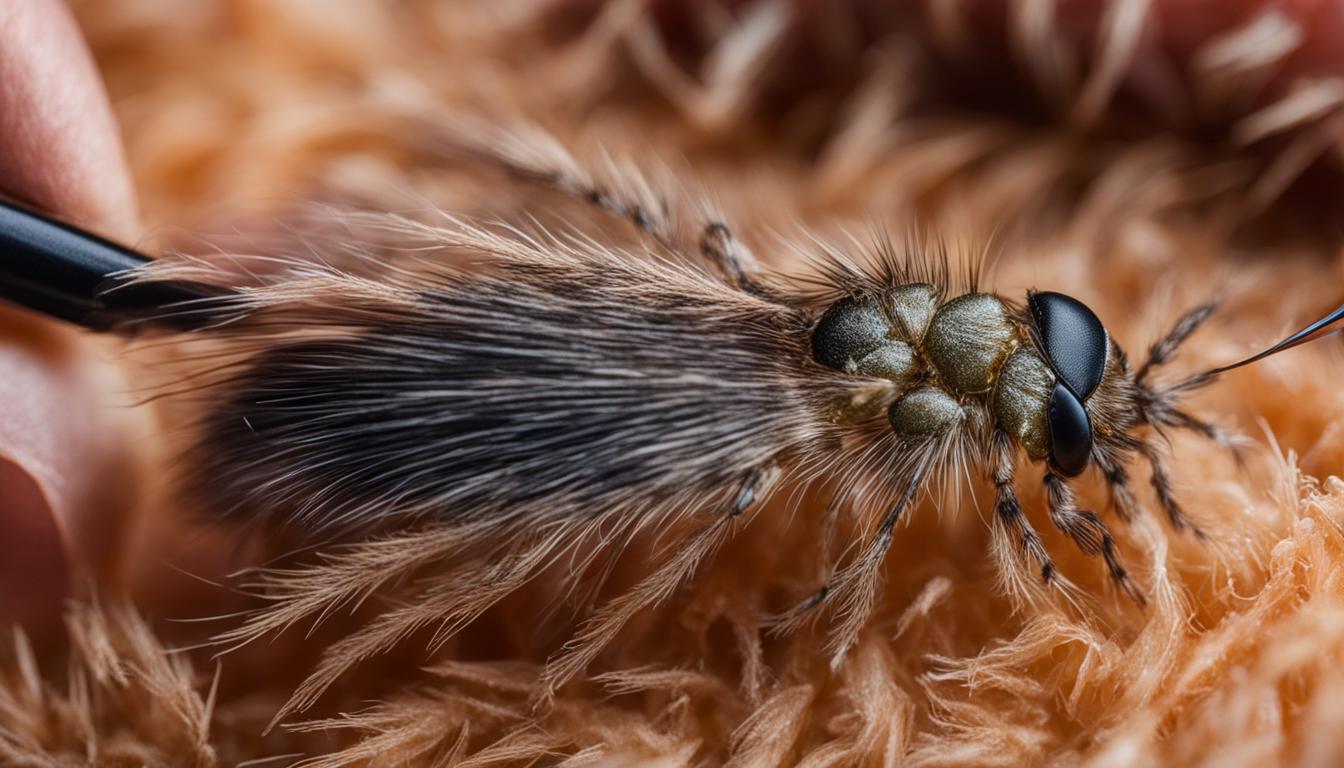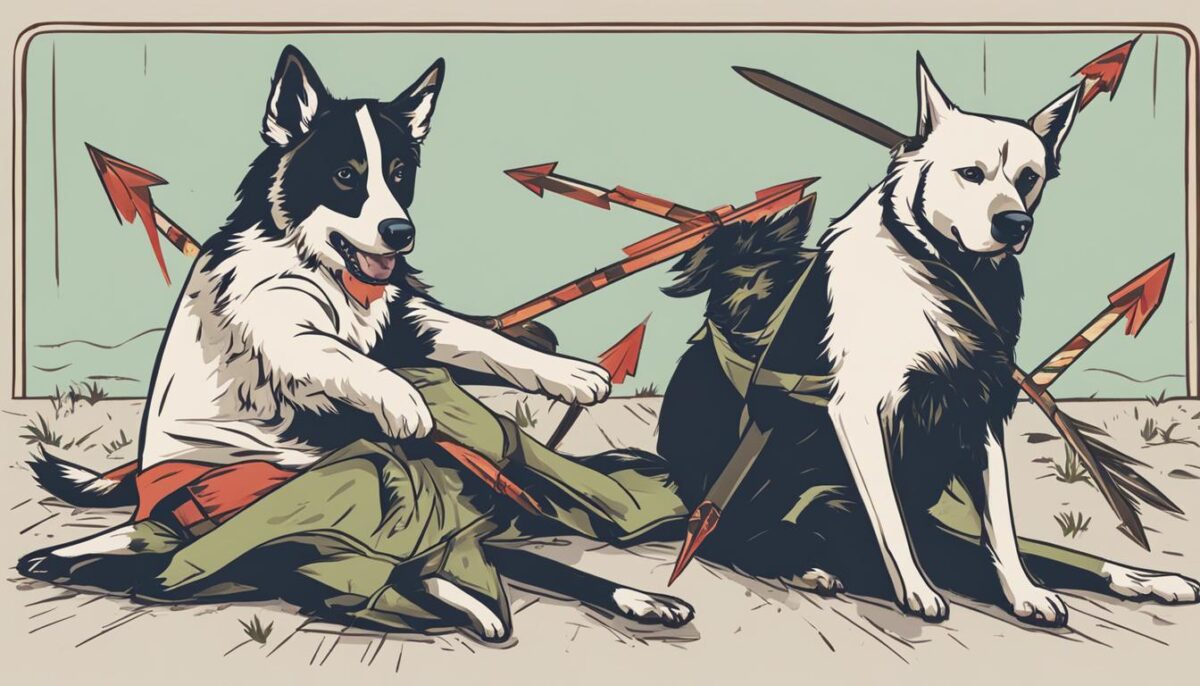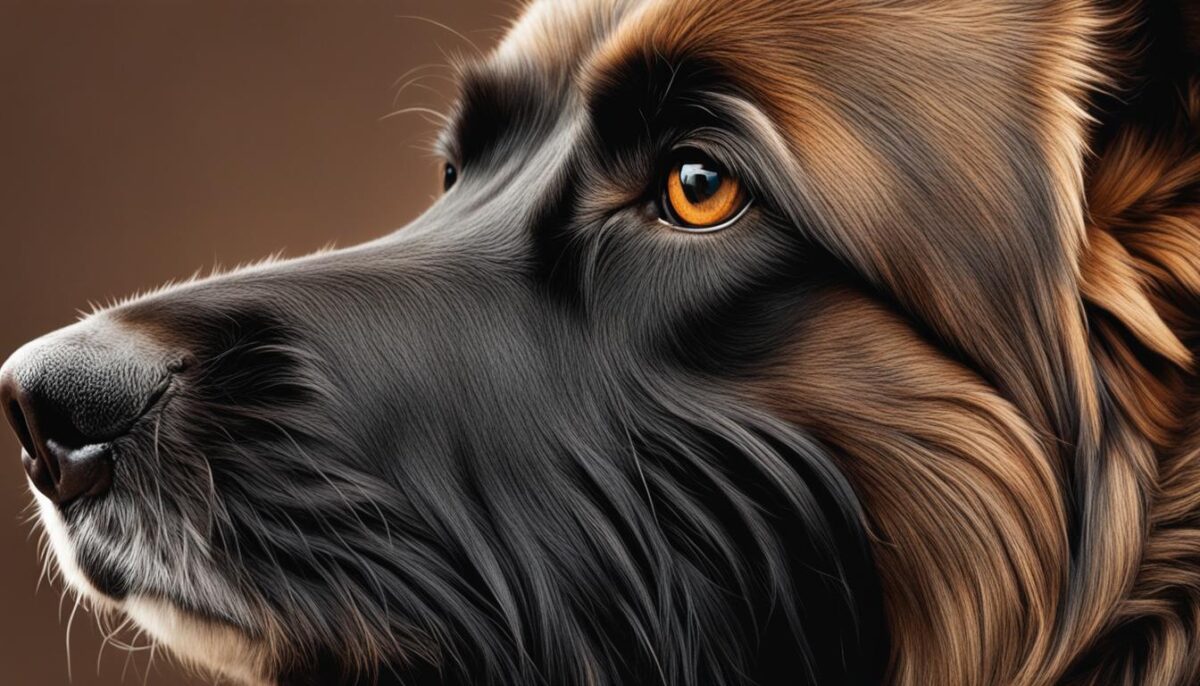You might wonder if your furry friends can get human head lice, especially when they are part of your family. The good news is that these pesky parasites are picky. Your dog has its own kind of lice, different from the ones that might bug you. Vets often share that dogs usually don’t get lice from humans. Instead, pooches have their unique kind that bothers them. So, if you’re worried about your pet’s health, let’s explore what experts have to say about lice infestation in dogs.
Key Takeaways
- Human head lice do not usually live on dogs.
- Lice are tiny bugs that can cause itchiness and discomfort.
- Egg cases, called nits, stick to hair and look like dandruff.
- Vets can tell if a dog has lice by looking closely at its fur and skin.
- There’s good medicine to help dogs with lice feel better fast.
- It’s rare for dogs in the U.S. to get lice, but it’s good to check them often.
The Species-Specific Nature of Lice
When it comes to lice, many people think they hop from head to head without caring who they bite. But that’s not true – lice are super picky bugs! They only stick to one type of animal and don’t like to move to others. For example, the lice that live on people like to stay on people, and the ones on dogs want to stay on dogs. Understanding this can help you see why your furry friends won’t get human head lice, and you won’t get lice from them.
Understanding Lice Life Cycles
Let’s talk about the lice life cycle. These little bugs have a life span of about 21 days, going from egg to grown-up during this time. They start as eggs, called nits, which stick to hair. Then they hatch into babies, called nymphs, who grow up into adult lice on your pet. The whole time, they stay cozy and close on their special animal, not wandering around much.
Comparing Human and Pet Lice
Human and dog lice are like cousins that don’t visit each other. They are species-specific parasites, which means they just want to live on the type of animal they’re used to. So, even if you have lice in your hair, your dog or cat is safe from them, and their lice won’t bother you. Everyone has their own type of lice that won’t spread to others.
How Pets Show Signs of Their Own Lice
Dogs and cats show they have lice in ways you can spot if you know what to look for. If your pet has pet lice symptoms, like scratching a lot or having a coat that doesn’t look healthy, with bare spots around their ears, neck, shoulders, and bottom, it might be because of lice. You might also see nits, the tiny white eggs, on their hair, which tells you lice are indeed there.
Being a great pet owner means knowing about these icky bugs and how to spot them. So now, you can make sure your pets stay happy, healthy, and lice-free!
Lice Transmission and the Myth of Cross-Species Infestation
Hey there! Have you ever worried that your fluffy friend might catch head lice from you? Well, breathe easy because lice transmission doesn’t work that way. Lice are super picky and only like to live on certain animals. So, your dog or cat won’t get human head lice, just like you won’t get the kind that likes them. This is called cross-species infestation and it’s a big myth!
Pets get lice from other animals of their kind, usually when they’re super close to each other, like in a warm cuddly huddle. Places with lots of animals close together, like kennels, are spots where pets might get lice from each other. This is because they share space, bedding, and sometimes grooming tools. It’s not because they’ve been hanging out with people who have lice.
- If a pet has lice, keep them away from their furry friends until they’re all better.
- Regular cleaning of their sleeping spots and play areas helps keep the pesky bugs away too.
Remember, good hygiene and regular pet check-ups are super important to stop these itchy insects from making your pet scratch all day long. Stay bugged about bugs to keep your four-legged pals happy and itch-free!
Identifying Symptoms of Lice in Dogs
Seeing your dog scratch might seem normal, but too much scratching can be a sign of lice. It’s important for you to spot the signs early so you can help your furry friend feel better. Lice can make dogs really itchy and uncomfortable. Let’s find out how you can tell if lice are bugging your pup.
Recognizing the Signs: Scratching and Skin Changes
If your dog keeps scratching, it might mean lice are causing trouble. Apart from all the scratching, look for skin changes. Your dog’s skin might get red spots and maybe even some sores. This happens more where their hair is not so thick. Dogs feel lice bites and scratch to ease the itchiness and discomfort.
Assessing for Visible Nits and Thin Coats
You can see lice eggs, called nits, in your dog’s coat. They look like tiny white flakes. But, don’t mix them up with dandruff. These nits stick to the hair. Puppies often have thinner coats, so it’s easier to spot nits on them.
| Where to Spot Nits | What to Look For |
|---|---|
| Back of the neck | White specks clinging to hair |
| Base of tail | Flaky spots mixed with hair |
| Behind the ears | Thin white particles on skin |
The Severity of Symptoms in Puppies and Adult Dogs
Puppies might get sicker than adult dogs from lice. They can lose blood to the pesky lice. This can make them very weak. You need to look out for your little puppy and see the vet fast if they have lice. Adult dogs can handle lice better but still need your help to get rid of them.
Remember, if you find these signs, talk to your vet. They can help your dog stop feeling itchy and get their happy tail wagging again.
Effective Treatment Options for Lice in Dogs
If your furry friend is itching a lot, they might have lice. Don’t worry, there are good ways to treat dog lice and make your pet feel better. Vets have some special soaps and medicines for your dog’s skin that can kill the lice and stop the itching.
Insecticidal Shampoos and Topical Treatments
You can give your dog a bath with insecticidal shampoos. These shampoos have medicines in them like fipronil, selamectin, and others that start with names like sarolaner and fluralaner. These help to get rid of the lice. You might need to bathe your dog with these shampoos a few times, maybe every two weeks, until all the lice are gone.
Preventative Measures and Environmental Sanitation
It’s also important to keep your dog’s places clean. Wash their bed and any blankets they sleep with. You can also keep lice away by combing your dog’s fur and making sure their home is nice and tidy. Using special products that keep lice away helps too.
Dealing with Severe Infestations and Long-Term Care
If your dog has a lot of lice, your vet might tell you to clean more or throw away things that can’t be cleaned well. If the lice don’t go away with the shampoos, your vet might try a different treatment to help your dog. Remember, the goal is to make your pet happy and free from itching.
FAQ
Can dogs get human head lice or are lice species-specific?
Dogs cannot get human head lice because lice are species-specific parasites. Human lice are adapted to live on humans, and similarly, dog lice are adapted to live on dogs, so a lice infestation is unique to the host species.
What is the life cycle of lice found on pets?
The life cycle of pet lice is about 21 days, consisting of various nymphal stages before reaching adulthood. During this time, they are relatively immobile and do not move quickly, staying on their specific host.
How can I tell if my pet has lice?
Signs of lice infestation in pets include severe itching, dry and scruffy coat, bald patches around the ears, neck, shoulders, and anus, as well as white flakes in the fur which are actually lice eggs or nits.
How are lice transmitted between animals?
Lice are transmitted through direct contact with an infested animal or through contaminated grooming equipment, bedding, and shared spaces such as kennels and boarding facilities.
What symptoms should I look for if I suspect my dog has lice?
Symptoms of lice in dogs include excessive scratching, hair loss, the presence of white flakes that are nits in their coat, redness, inflammation, and potentially open sores. Puppies may suffer from anemia if the infestation is severe.
What treatments are effective against dog lice?
Effective treatments for dog lice include insecticidal shampoos and topical treatments containing fipronil, selamectin, or isoxazoline-based products like sarolaner, lotilaner, fluralaner, and afoxalaner. Vets may recommend repeated applications in line with the product’s instructions to fully eradicate the lice.
Are there any preventative measures to protect my dog from lice?
Yes, preventative measures against lice in dogs include regular grooming, maintaining clean living spaces for your pets, and using parasite control products. These steps can help prevent lice infestations and maintain your pet’s health.
Can severe lice infestations in dogs lead to more serious health issues?
Severe lice infestations can lead to significant blood loss in puppies, resulting in anemia or shock. In adult dogs, persistent scratching can lead to skin infections. It’s important to address severe infestations promptly to prevent more serious health issues.
How do I manage environmental sanitation if my dog has lice?
Environmental sanitation involves thoroughly cleaning or disposing of the dog’s bedding, grooming tools, and any fabric or materials the dog has been in contact with. This helps to eliminate any lingering lice or nits and prevent re-infestation.


